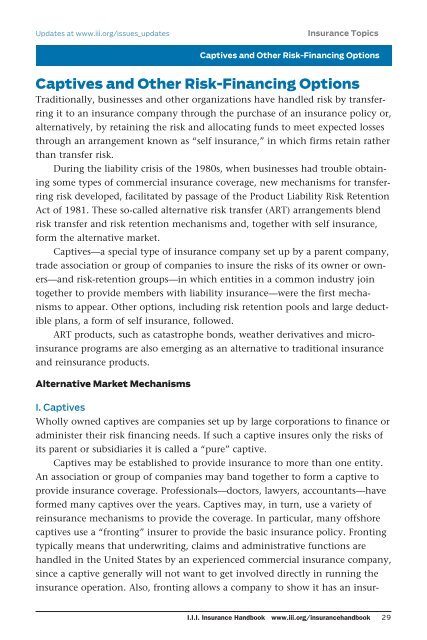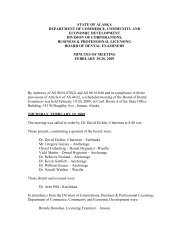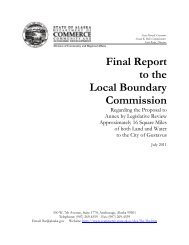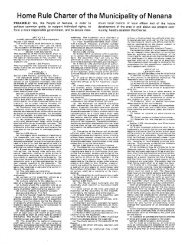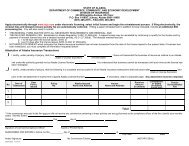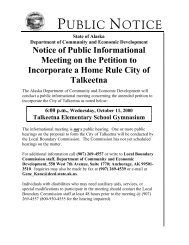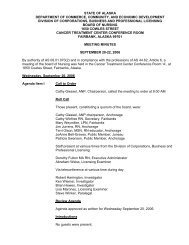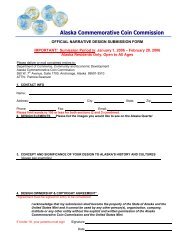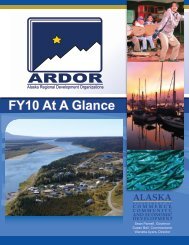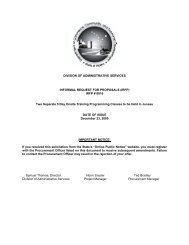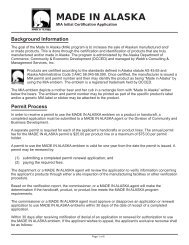Insurance Handbook - Alaska Department of Community and ...
Insurance Handbook - Alaska Department of Community and ...
Insurance Handbook - Alaska Department of Community and ...
Create successful ePaper yourself
Turn your PDF publications into a flip-book with our unique Google optimized e-Paper software.
Updates at www.iii.org/issues_updates <strong>Insurance</strong> Topics<br />
Captives <strong>and</strong> Other Risk-Financing Options<br />
Captives <strong>and</strong> Other Risk-Financing Options<br />
Traditionally, businesses <strong>and</strong> other organizations have h<strong>and</strong>led risk by transfer-<br />
ring it to an insurance company through the purchase <strong>of</strong> an insurance policy or,<br />
alternatively, by retaining the risk <strong>and</strong> allocating funds to meet expected losses<br />
through an arrangement known as “self insurance,” in which firms retain rather<br />
than transfer risk.<br />
During the liability crisis <strong>of</strong> the 1980s, when businesses had trouble obtaining<br />
some types <strong>of</strong> commercial insurance coverage, new mechanisms for transferring<br />
risk developed, facilitated by passage <strong>of</strong> the Product Liability Risk Retention<br />
Act <strong>of</strong> 1981. These so-called alternative risk transfer (ART) arrangements blend<br />
risk transfer <strong>and</strong> risk retention mechanisms <strong>and</strong>, together with self insurance,<br />
form the alternative market.<br />
Captives—a special type <strong>of</strong> insurance company set up by a parent company,<br />
trade association or group <strong>of</strong> companies to insure the risks <strong>of</strong> its owner or owners—<strong>and</strong><br />
risk-retention groups—in which entities in a common industry join<br />
together to provide members with liability insurance—were the first mechanisms<br />
to appear. Other options, including risk retention pools <strong>and</strong> large deductible<br />
plans, a form <strong>of</strong> self insurance, followed.<br />
ART products, such as catastrophe bonds, weather derivatives <strong>and</strong> microinsurance<br />
programs are also emerging as an alternative to traditional insurance<br />
<strong>and</strong> reinsurance products.<br />
Alternative Market Mechanisms<br />
I. Captives<br />
Wholly owned captives are companies set up by large corporations to finance or<br />
administer their risk financing needs. If such a captive insures only the risks <strong>of</strong><br />
its parent or subsidiaries it is called a “pure” captive.<br />
Captives may be established to provide insurance to more than one entity.<br />
An association or group <strong>of</strong> companies may b<strong>and</strong> together to form a captive to<br />
provide insurance coverage. Pr<strong>of</strong>essionals—doctors, lawyers, accountants—have<br />
formed many captives over the years. Captives may, in turn, use a variety <strong>of</strong><br />
reinsurance mechanisms to provide the coverage. In particular, many <strong>of</strong>fshore<br />
captives use a “fronting” insurer to provide the basic insurance policy. Fronting<br />
typically means that underwriting, claims <strong>and</strong> administrative functions are<br />
h<strong>and</strong>led in the United States by an experienced commercial insurance company,<br />
since a captive generally will not want to get involved directly in running the<br />
insurance operation. Also, fronting allows a company to show it has an insur-<br />
I.I.I. <strong>Insurance</strong> <strong>H<strong>and</strong>book</strong> www.iii.org/insuranceh<strong>and</strong>book 29


